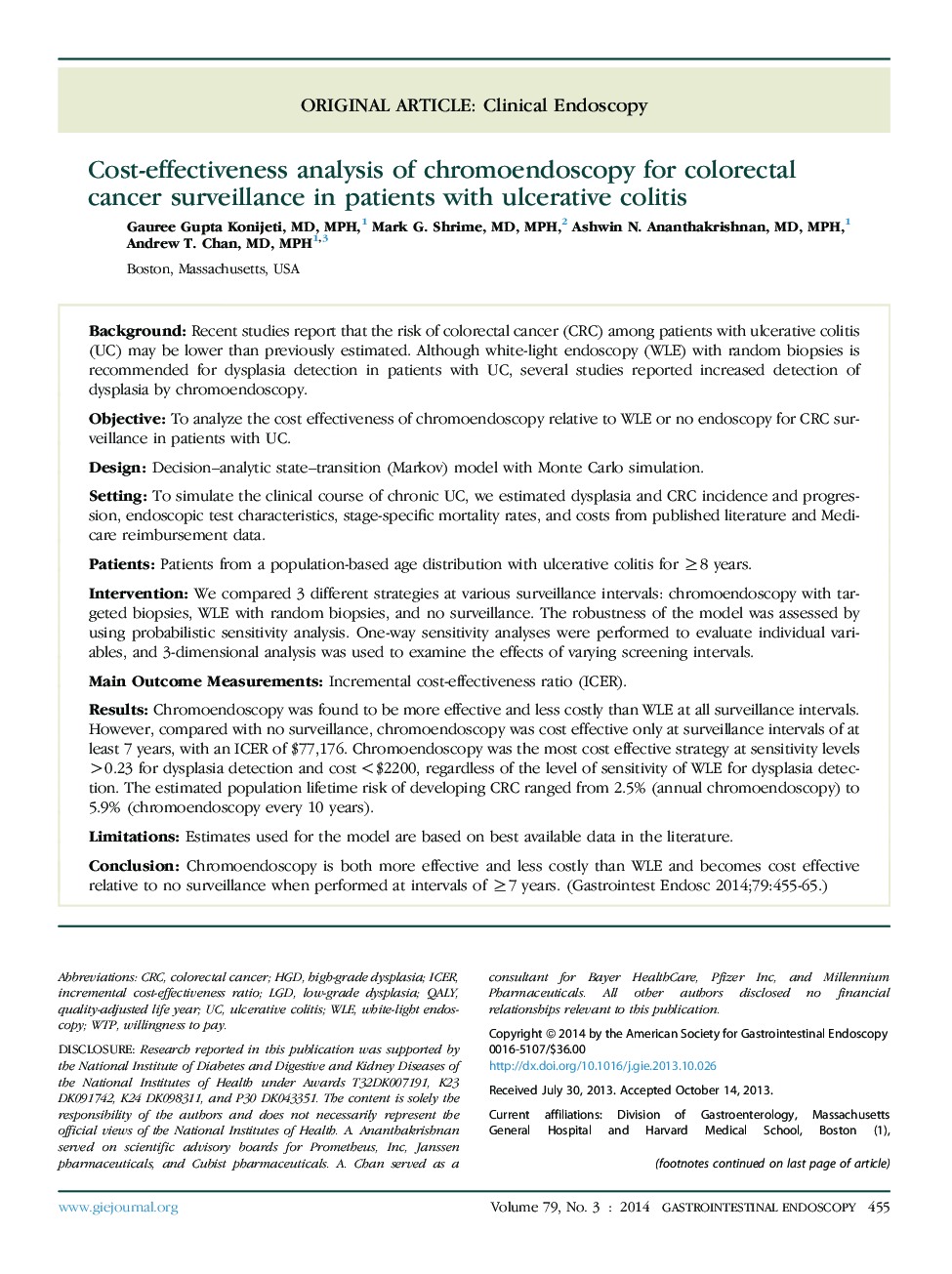| Article ID | Journal | Published Year | Pages | File Type |
|---|---|---|---|---|
| 3303403 | Gastrointestinal Endoscopy | 2014 | 11 Pages |
BackgroundRecent studies report that the risk of colorectal cancer (CRC) among patients with ulcerative colitis (UC) may be lower than previously estimated. Although white-light endoscopy (WLE) with random biopsies is recommended for dysplasia detection in patients with UC, several studies reported increased detection of dysplasia by chromoendoscopy.ObjectiveTo analyze the cost effectiveness of chromoendoscopy relative to WLE or no endoscopy for CRC surveillance in patients with UC.DesignDecision–analytic state–transition (Markov) model with Monte Carlo simulation.SettingTo simulate the clinical course of chronic UC, we estimated dysplasia and CRC incidence and progression, endoscopic test characteristics, stage-specific mortality rates, and costs from published literature and Medicare reimbursement data.PatientsPatients from a population-based age distribution with ulcerative colitis for ≥8 years.InterventionWe compared 3 different strategies at various surveillance intervals: chromoendoscopy with targeted biopsies, WLE with random biopsies, and no surveillance. The robustness of the model was assessed by using probabilistic sensitivity analysis. One-way sensitivity analyses were performed to evaluate individual variables, and 3-dimensional analysis was used to examine the effects of varying screening intervals.Main Outcome MeasurementsIncremental cost-effectiveness ratio (ICER).ResultsChromoendoscopy was found to be more effective and less costly than WLE at all surveillance intervals. However, compared with no surveillance, chromoendoscopy was cost effective only at surveillance intervals of at least 7 years, with an ICER of $77,176. Chromoendoscopy was the most cost effective strategy at sensitivity levels >0.23 for dysplasia detection and cost <$2200, regardless of the level of sensitivity of WLE for dysplasia detection. The estimated population lifetime risk of developing CRC ranged from 2.5% (annual chromoendoscopy) to 5.9% (chromoendoscopy every 10 years).LimitationsEstimates used for the model are based on best available data in the literature.ConclusionChromoendoscopy is both more effective and less costly than WLE and becomes cost effective relative to no surveillance when performed at intervals of ≥7 years.
